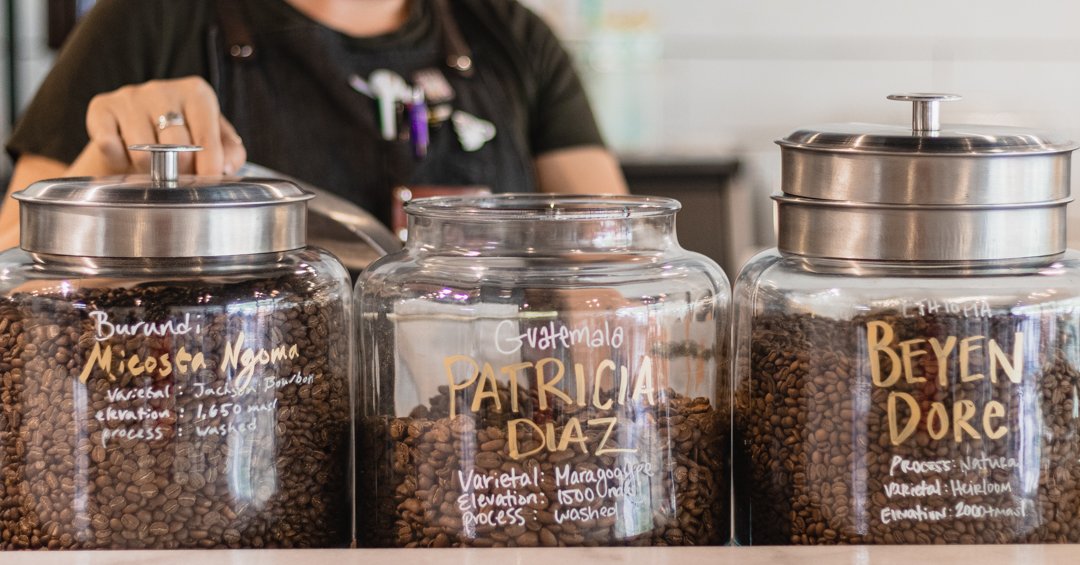Coffee Processing Methods: What do They Mean?
Have you ever bought a bag of specialty coffee (like our award-winning beans!) and wondered what it means when it says “process: washed”? Or maybe you know that you love when a coffee says “process: natural” on the bag but you’re still not sure what the differences between all the coffee processing methods are exactly? Let’s dig into the differences between coffee processing methods and how they affect the taste of your beans!
As we mentioned in an earlier post, coffee beans are actually the seed of a fruit: the coffee cherry. There are different ways to harvest and dry those seeds at the coffee farms. The goal of processing is always to separate the seed from the cherry and let it dry into the perfect green bean ready to be shipped out and roasted. Over the years, three different methods have become standard: washed, natural, and honey.
Recently some new processing methods have popped up, like Anaerobic or Carbonic Maceration. These new methods are always fun to try if you stumble across them as they can bring out some wild flavors in coffees. But we’re going to talk about the three most common methods.
Over time most specialty coffee fans develop a favorite processing method because of the taste it lends to the beans. Read on to see if you can spot your favorite!
In a washed coffee all of the cherry is removed from the seed before it is dried. Farmers run the coffee cherries through a machine that removes all the pulp. The seeds go into a water tank for a day or two to ferment, and any pulp that remains on the seeds is washed off. The clean seeds are laid out on drying beds and turned regularly by the farmer to dry into the green beans we roast.
In the washed process, only the seed is dried, none of the fruit, and this tends to lead to a clean-tasting coffee. It also means the flavor of the beans themselves must stand alone; no flavor from the coffee cherry will alter the flavor of the seed. This means you’re truly tasting just the coffee, and it can lead to a more consistent coffee. Washed coffees are often acidic, brighter, and milder. A lot of people think of them as the white wine of coffee.
Natural processing is what it sounds like. Coffee cherries are picked and then laid out to dry. That’s right: the whole coffee cherry is dried, not just the seed. The drying coffee is turned regularly by the farmer so it doesn’t mold and evenly dries. Once it’s dry, they remove the skin and dried fruit flesh. What’s left is the dried green bean that we roast.
Since natural coffees are dried with the fruit on, they’re often sweet and fruity. The flavor of the seed is altered by having the cherry dried with it. The variety of flavors added to the coffee this way can range from blueberry to tropical fruit to ferment to alcohol. Natural coffees often aren’t as consistent as washed, but the wild variety of flavors in natural coffees is a huge draw for many people. A lot of people think of this method as the red wine of coffee.
Honey processing is somewhere in between washed and natural. After they pick the coffee cherries, farmers remove part of the flesh but not all of it. The seeds with a little flesh left on them are laid out to dry. The farmer turns the beans so they dry evenly, and once they’re dry they remove the rest of the flesh from the seed. That leaves the green beans, ready to be exported and roasted.
Since less of the flesh is left to dry in this method, it’s at less of a risk to develop the fermented flavors that natural coffees have. This method also allows for a lot of nuance in the bean. When it’s done well, honey processing has the positive characteristics of both washed and natural methods: clean brightness and complex sweetness.
It should be noted that the farmer can leave different amounts of the fruit on the seed; because of this the honey process has subcategories. If you see a black honey processed coffee, you’ll know it was dried with a lot of fruit on the seed. Red honey with less, yellow honey with even less, and white honey with the least amount of flesh left on the seed during drying. The varying levels will affect the sweetness and fruitiness or how much it reminds you of a natural coffee.
So there you have it: not all beans are processed equally. Those words on the bag really do indicate something about the taste of the beans within. Next time you’re shopping for coffee, you’ll know how to interpret them and maybe try something new!











